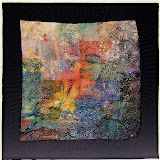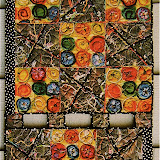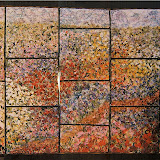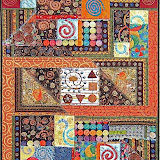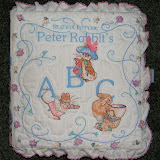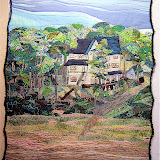Well, this piece is just beginning to exhibit some order and sense. I've cut apart some of the blocks to help distribute colors as well as particular lines and shapes. Also, some of my stash fabrics have been quilted and distributed.
 There are as many different ways to come up with a design as there are artists. We each have our own quirks and there are no formulas. Every step in creating a design involves choices that solve problems, and the selections are determined by thinking and employing the principles of design:
There are as many different ways to come up with a design as there are artists. We each have our own quirks and there are no formulas. Every step in creating a design involves choices that solve problems, and the selections are determined by thinking and employing the principles of design:
- proportion
- balance
- emphasis
- rhythm
Those are the guides in choosing and arranging the elements within the design:
- lines
- shapes
- colors
- textures
- space
My procedure is to begin with the materials, to let them suggest to me patterns of organization. It's easiest for me if I can slap a number of blocks or pieces of fabric on the design board ... these being made as a result of my being intrigued or just playing with an idea or technique. I then move pieces around, studying it from many angles throughout the day.
Relationships become evident. Even though there are spirals everywhere in this piece, there are different moods in their lines and colors. How to group and to distribute them throughout is my biggest challenge. Right away I saw saw a connection between these two:


The top one is the most distinctive and complex of all the blocks ... in fact, it seems to be telling a story. The bottom one seems to be supporting/echoing that story ... much like a crowd or tribe. To help carry through that thought I sliced the right one on a diagonal and placed half on each side of the focus block. This also served to distribute those bright orange bead spirals. The blocks are completed with a black linen fabric that I had discharged with a fancy spiral stamp several years ago. Chance or accident is also an element in art.

These isolated spirals floating on background colors that are complementary to each other are paired in mind.


I sliced the top one to make two pieces to more evenly distribute that strong pattern and texture. They play nicely with the squared up orange and blue block. Plus the trimmings from that block shoot streaks of orange out into the whole piece. Down the road those black springy spirals from a notebook spine will get distributed across the quilt.

These three blocks feature strong pure hues and exude a feeling of playfulness. It won't be difficult to distribute them as they are throughout the composition.



However, they could use some help, so I quilted spirals in the brightly colored circles on a black background. But first, I played with a bleach pen on that fabric. I drew bleach spirals within each circle and made random dots on the black fabric between them to give a bit more complexity to that simple patterning. It's been cut into five pieces and distributed throughout.

This is just the beginning of the process to get all of these blocks into a unified composition. I've got a long way to go before it can be considered to be a piece of art. Right now, it's just fabric blocks on the design wall. I'll write more about my thoughts and decisions as it progresses.

















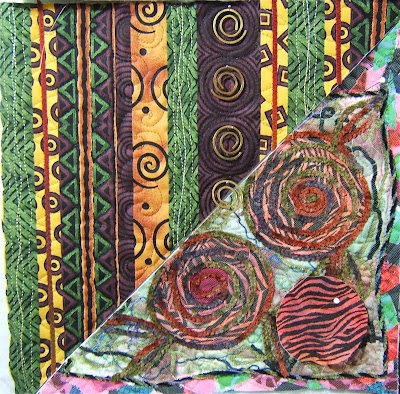


























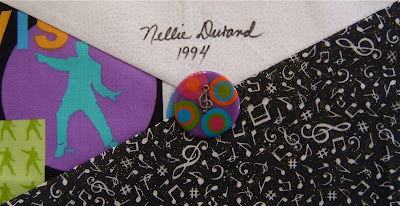











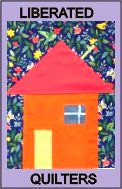 Fabric Bird Sculpture Pattern
Fabric Bird Sculpture Pattern




